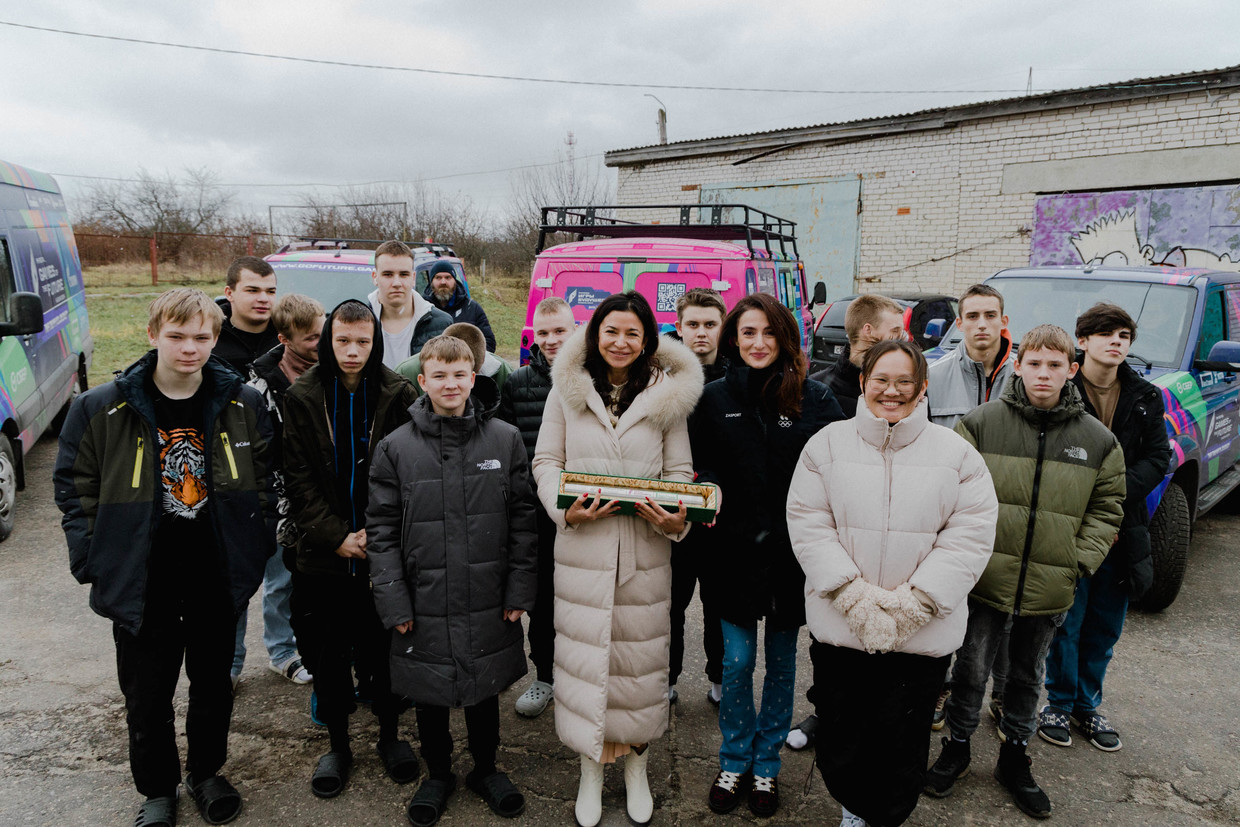
Excitement grows for Games of the Future as trophy orbits Earth aboard ISS
The trophy of the Games of the Future was launched from Baikonur Cosmodrome to the International Space Station on December 1


Over the course of two weeks, the main symbol of the Games of the Future, which combine e-sports and traditional athletic competitions, made appearances in eight Russian cities, which hosted events to promote the new movement. While phygital football was played in Nizhny Novgorod and a phygital curling event took place in Ulyanovsk, participants of a car rally visited Tatarstan’s capital Kazan, Innopolis University, and the Aviation Museum in Samara. After a tour of Russia, the trophy of the Games of the Future was launched from Baikonur to the ISS on December 1.

The trophy of the Games of the Future was first displayed to the general public at the All-Russian Exhibition Center VDNKh in Moscow during an event celebrating the start of the last 100-day stretch before the games commence in Kazan. The trophy symbolizes the five “challenges” of the tournament: sports, technical, speedrun, tactical, and battle.
After presenting the trophy, Dmitry Chernyshenko, Russia’s deputy prime minister, passed it on to volunteers, who embarked on a drive across several Russian cities. The trophy itself was transported in an iconic SGR Bukhanka (“Bread Loaf”) van, accompanied by several buses and vans manufactured by Sollers Atlant, as well as UAZ-made Patriots, Pickups, and SGRs.

Some of the first people to see the symbol of the innovative championship were residents of the Bogoyavlensky Children’s Home in Nizhny Novgorod. The kids there are well-aware of what this is all about since they have their own phygital football team and love to compete with other enthusiasts.
 Sport of the new reality: Russia prepares for ‘Games of the Future’
Sport of the new reality: Russia prepares for ‘Games of the Future’
According to Alexander Kononov, the minister of sport of the Nizhny Novgorod Region, phygital is gaining traction in and around Nizhny Novgorod, with some teams performing successfully at various events.
“What really matters is not that phygital allows you to jerk your joystick around, play video games, and score points. It’s also a chance to get out on the court and put your physical fitness to the test. That is one of the purposes of phygital,” he said.
From Nizhny Novgorod, the rally continued to Tatarstan. It visited Kazan and nearby Innopolis, the focal point for some of the country’s brightest minds, where the drivers and passengers could experience cutting-edge developments in robotics: they were able to see a sorting robot at work, learn about the operation of a robotic arm, and try giving directions to a robodog.

Kamila Valieva, an Olympic champion in figure skating, was among those who welcomed the trophy in the Ulyanovsk Region.
“I wish all phygital athletes success in Kazan in 2024,” she said on the ice of the Volga Sport Arena, where spectators could take selfies of themselves with the trophy and Kamila on the skating rink as well as watch the first phygital curling tournament, which is a candidate sport for the Games of the Future. Guests took part in an interactive trivia quiz and watched a spectacular drone show.
“What we’re seeing right now is the approaching merger between modern technology and centuries-old traditions of sport. The phygital movement may be very young but it’s already won over many fans throughout Russia, including people in the Ulyanovsk Region. That is why we’re enthusiastically promoting it. The region has an accredited federation, and our athletes have achieved some important first victories,” Ulyanovsk Region Governor Alexei Russkikh said.

“Next year, we’re going to launch a phygital sports center using funds from the federal Business Sprint project. We’d also like to start training our first phygital coaches. I’m convinced that hundreds of our young residents will take to this new sport and make our region proud really soon,” he added.
